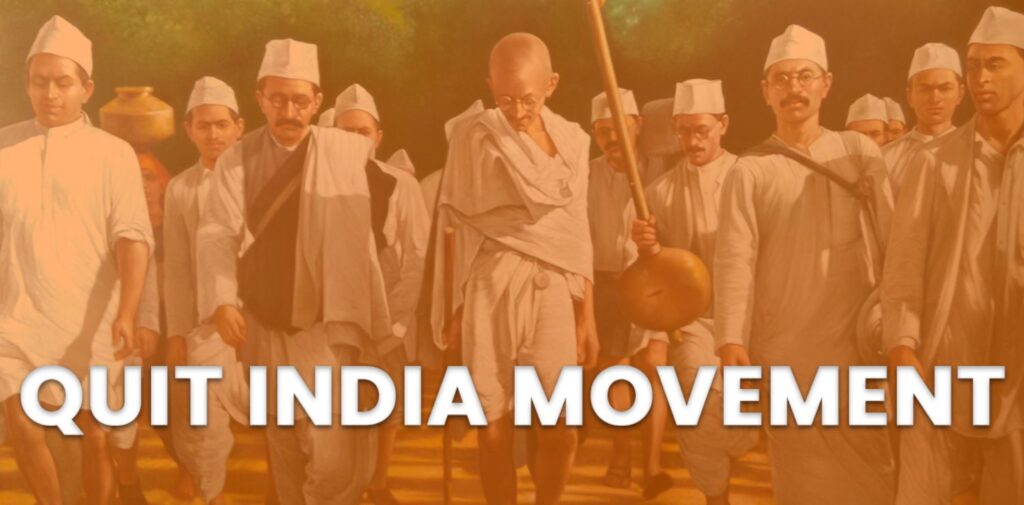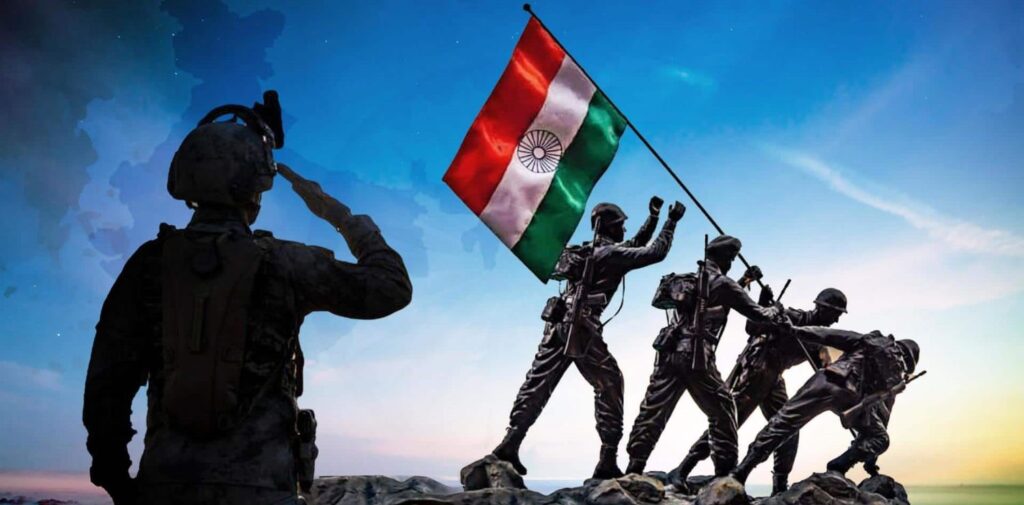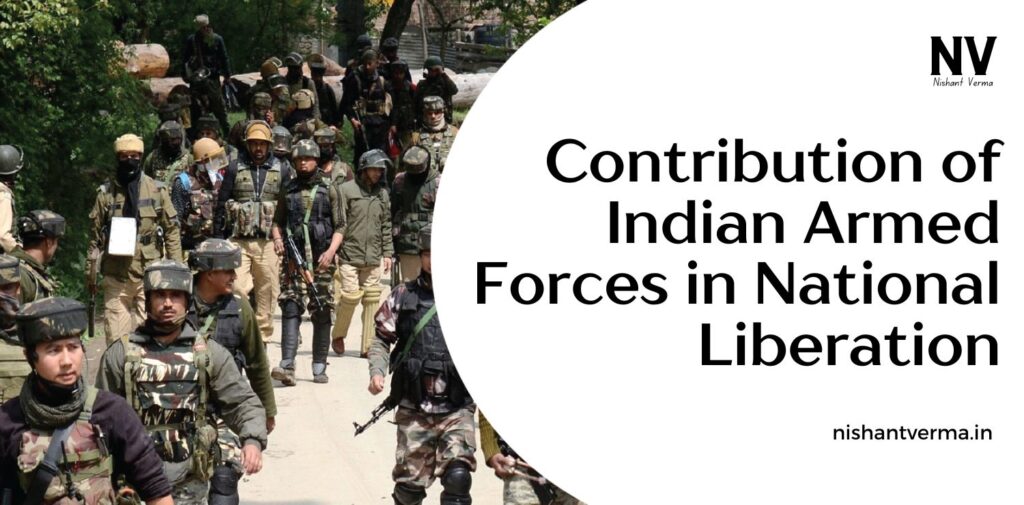The Indian Armed Forces have played an immensely crucial role in the country’s struggle for independence. Although the path to freedom from British colonial rule was long and painful, the contribution of the military, alongside other civil movements, helped in shaping the future of a free India. From direct combat to strategic defense operations, the Armed Forces contributed in various ways that laid the foundation for a sovereign nation. In this article, we’ll explore the Contribution of Indian Armed Forces in National Liberation.
1. Early Military Resistance and Revolts
India’s first major military resistance against British rule began long before the organized movements of the 20th century. During the early stages of British colonization, the Indian military forces, which had been part of princely states, were often part of the resistance against foreign rule.
The Sepoy Mutiny of 1857, also known as the First War of Indian Independence, was one of the first instances where the Indian military rose in unison against the British East India Company. Although it was suppressed, the revolt ignited the spark for further revolts and resistance movements across the country. The mutiny itself involved many soldiers from the British Indian Army, and their courage in fighting for independence inspired future generations.
2. World War Contributions
One of the most significant contributions of the Indian Armed Forces to the cause of national liberation came during the two World Wars, especially World War I and World War II. During both conflicts, India was a British colony, and yet, more than 2.5 million Indian soldiers volunteered to fight in various theaters of the war. These soldiers, despite being under foreign rule, fought valiantly in Europe, Africa, and Asia, showcasing India’s military prowess.
World War I saw Indian soldiers fight in the trenches of Europe, and many sacrificed their lives. The significant participation of Indian troops, especially in battles like Gallipoli and Mesopotamia, made the British authorities realize India’s importance and the strong spirit of its people.
In World War II, India’s Armed Forces grew even larger, and soldiers participated in key battles like the Battle of El Alamein, the Burma Campaign, and in other parts of Southeast Asia. The efforts and sacrifices made by the Indian soldiers in these wars, along with the country’s economic contribution to the Allied forces, highlighted India’s capability and determination. These sacrifices helped stir nationalist sentiments and made people more vocal about their desire for independence.

3. The Quit India Movement and Role of the Armed Forces
While the Quit India Movement of 1942 was largely a civil disobedience movement led by leaders like Mahatma Gandhi and Jawaharlal Nehru, the role of the Indian Armed Forces was not negligible. Although the military wasn’t directly involved in the movement, many soldiers and officers became sympathetic to the cause of independence. The British authorities, recognizing the potential for mutiny within the ranks, kept a close eye on the military personnel.
During this period, there were several instances of revolt among soldiers. One of the most notable instances was the Royal Indian Navy Revolt of 1946. Navy sailors from different parts of India united in protest against the British colonial rulers. The revolt spread to cities like Bombay (now Mumbai) and other coastal areas, and although it was eventually quelled, it became a symbol of defiance against British rule and displayed the deep-seated resentment within the Armed Forces.

4. Role of the Indian National Army (INA)
One of the most extraordinary contributions to the Indian independence struggle came from the formation of the Indian National Army (INA), led by the charismatic Subhas Chandra Bose. Bose, a freedom fighter, realized the importance of armed struggle against the British. He sought help from Axis powers like Germany and Japan to form a national army that would fight to liberate India.
The INA was composed of Indian prisoners of war from the British Indian Army, along with Indian expatriates, and it fought alongside the Japanese forces during the Burma Campaign. Although the INA was not victorious in the battle, it inspired millions of Indians by proving that a dedicated military force could resist British rule. The INA’s motto “Chalo Delhi” (March to Delhi) became a rallying cry for the nation.
The contribution of the INA soldiers to India’s freedom struggle was immense. Although the INA was not victorious in battle, it showed the British that India’s Armed Forces could rise against them and that colonial rule would not last forever.
5. The Naval and Air Force Contributions
While the Indian Army’s role in India’s liberation is widely acknowledged, the contributions of the Indian Navy and Air Force are equally significant. During the Second World War, Indian Navy sailors fought in the Mediterranean and the Pacific regions, supporting Allied forces in key naval battles. The Navy’s courage and commitment played a critical role in maintaining strategic control over critical sea routes and resources.
On the other hand, the Royal Indian Air Force (RIAF) had its own significant role to play. The air force participated in airstrikes, reconnaissance missions, and support for ground forces in both world wars. The contribution of the RIAF in securing India’s borders and protecting vital strategic assets during World War II helped boost India’s defense preparedness and showcased its military potential.
6. Indian Armed Forces and the Post-Independence Era
The Indian Armed Forces’ role in liberation did not end with the country’s independence in 1947. The forces were instrumental in protecting the newly formed nation from external threats. For instance, the Indo-Pakistani War of 1947-1948 saw the Indian Army defending Kashmir after it was invaded by Pakistani forces. The military’s role was crucial in securing the region and ensuring India’s territorial integrity.
Furthermore, the Indian Armed Forces have been involved in peacekeeping operations in various international conflicts under the banner of the United Nations. The Indian military’s leadership in peacekeeping operations has showcased the country’s commitment to global peace, and its role in national liberation continues to be influential even today.

7. The Ongoing Legacy of the Armed Forces
The Indian Armed Forces continue to serve as a symbol of strength, unity, and resilience. The sacrifices made by the soldiers, sailors, and airmen during the freedom struggle laid the groundwork for a sovereign, strong, and self-reliant nation. The defense forces of today continue to protect India from external threats, and their professionalism and commitment ensure the country’s security.
Through its involvement in numerous operations and exercises, the Indian Armed Forces contribute to peace and stability both within the region and globally. Today’s military is equipped with state-of-the-art technology and training, ensuring that India’s independence and sovereignty are safeguarded in an ever-changing geopolitical environment.
Conclusion: Contribution of Indian Armed Forces
The contribution of the Indian Armed Forces in the national liberation movement is not limited to the battlefield; it is a legacy built on courage, sacrifice, and patriotism. From the first signs of rebellion in the 19th century to the formation of the INA, and through the sacrifices made during World War I and II, the Armed Forces of India played a central role in India’s independence.
The Armed Forces’ influence is not just in their role during the struggle for freedom but also in their ongoing commitment to maintaining India’s sovereignty. Today, they continue to serve the nation with the same spirit that contributed to India’s liberation, ensuring the security and prosperity of the country.
India owes much of its freedom to the bravery and sacrifices of its Armed Forces. As the nation continues to progress, we must remember and honor the incredible contributions made by these forces, which laid the foundation for the independent India we cherish today.




